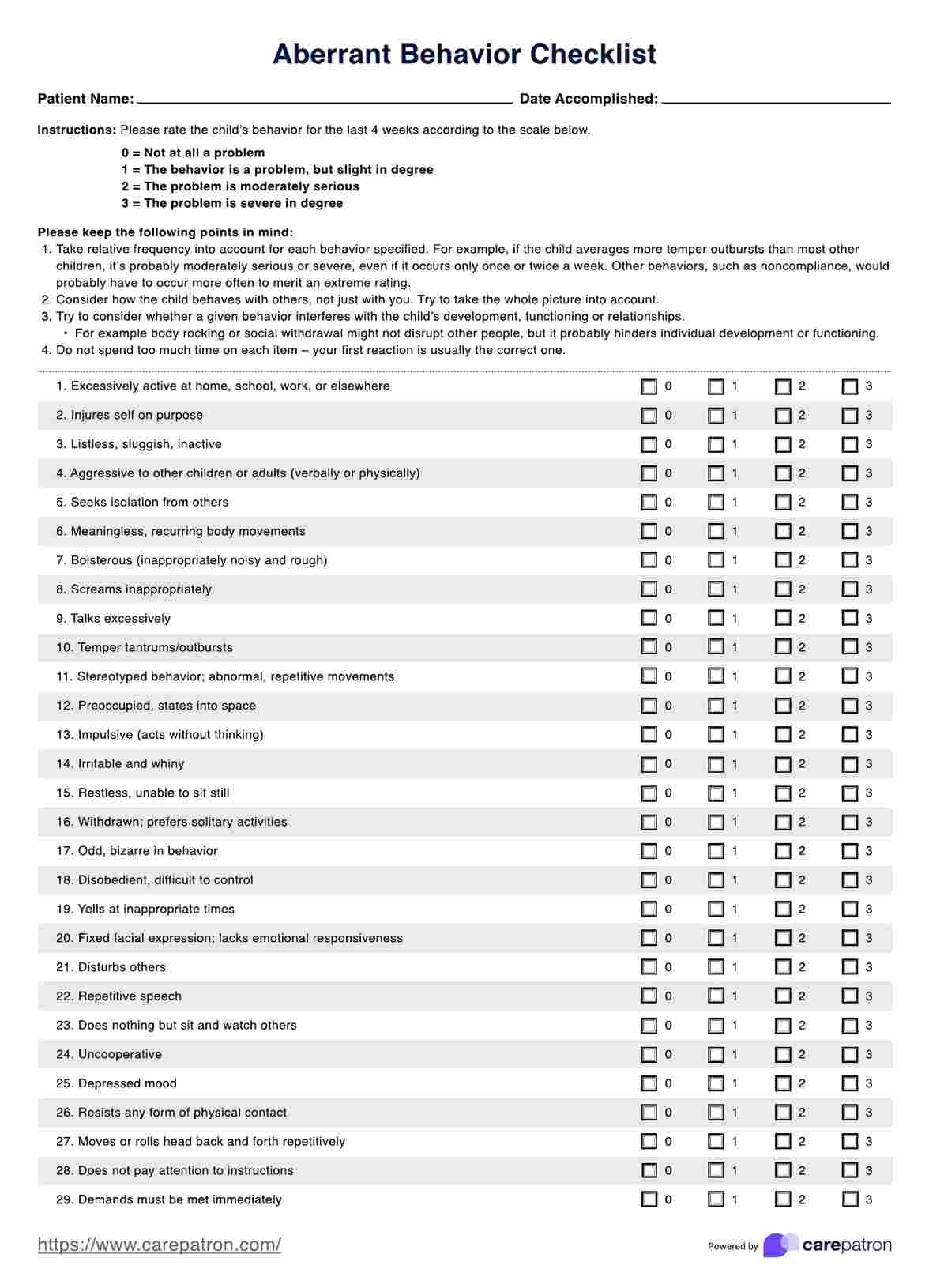The checklist is copyrighted. It is part of a kit with scoring components to help you calculate and interpret the ratings and scores. Here, we have a guide and a sample image of what the checklist would generally look like when fully accomplished. Please make sure to buy an official copy from the Stoelting Co. website.

Aberrant Behavior Checklist
If you need to assess a child for any possible behavioral problems and developmental disabilities, make use of the Aberrant Behavior Checklist to examine them and help you develop a treatment plan!
Aberrant Behavior Checklist Template
Commonly asked questions
No. This tool is specifically designed to assess the frequency and severity of a child's problematic behaviours. It should not be used to diagnose a child with anything.
It’s highly recommended that you use this checklist alongside other documents, whether worksheets or assessments. While the checklist is comprehensive in its own right, it is best to use it with other documents to get a better picture and understanding of the child so you can create the proper care plan for them.
EHR and practice management software
Get started for free
*No credit card required
Free
$0/usd
Unlimited clients
Telehealth
1GB of storage
Client portal text
Automated billing and online payments











